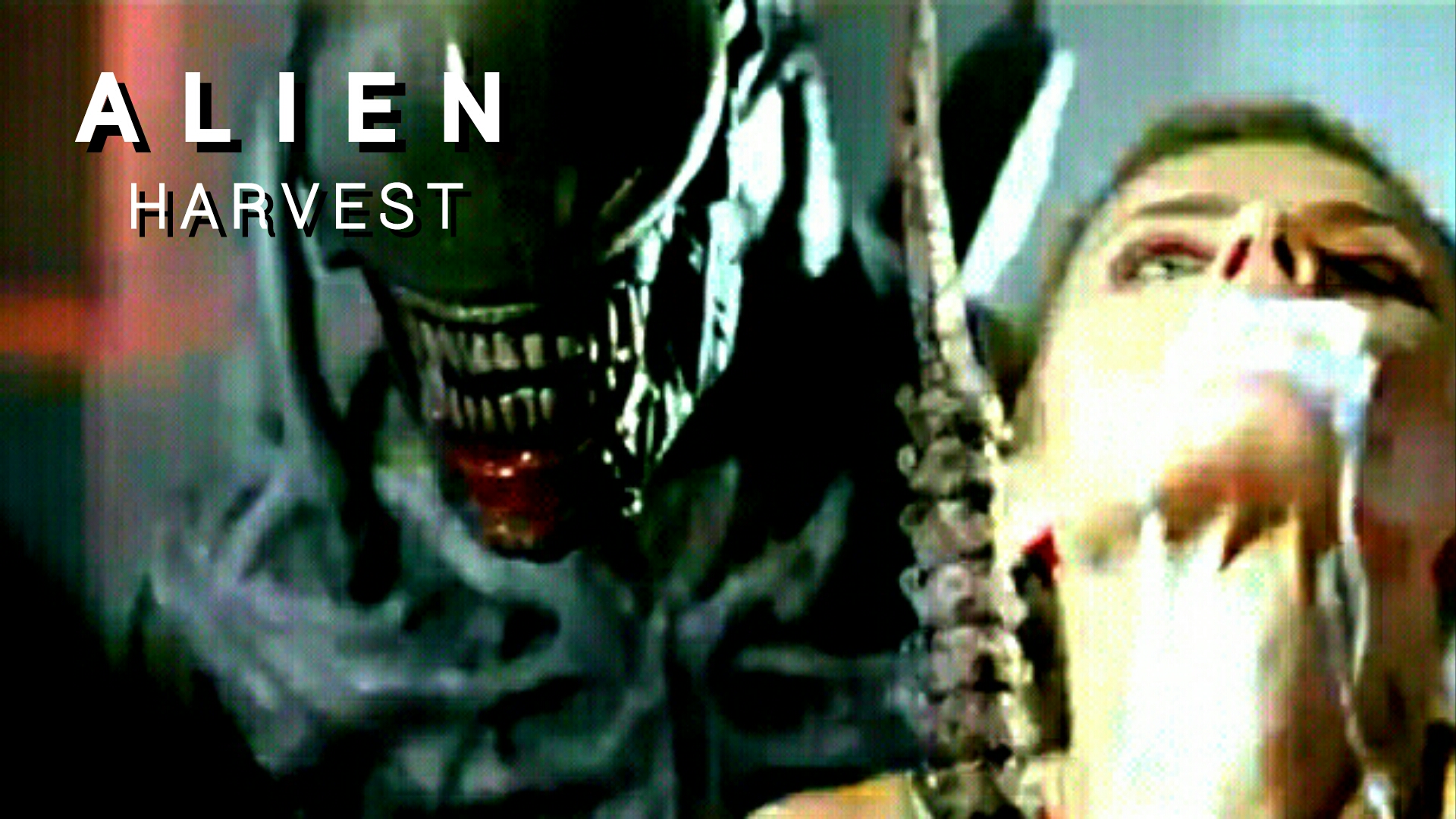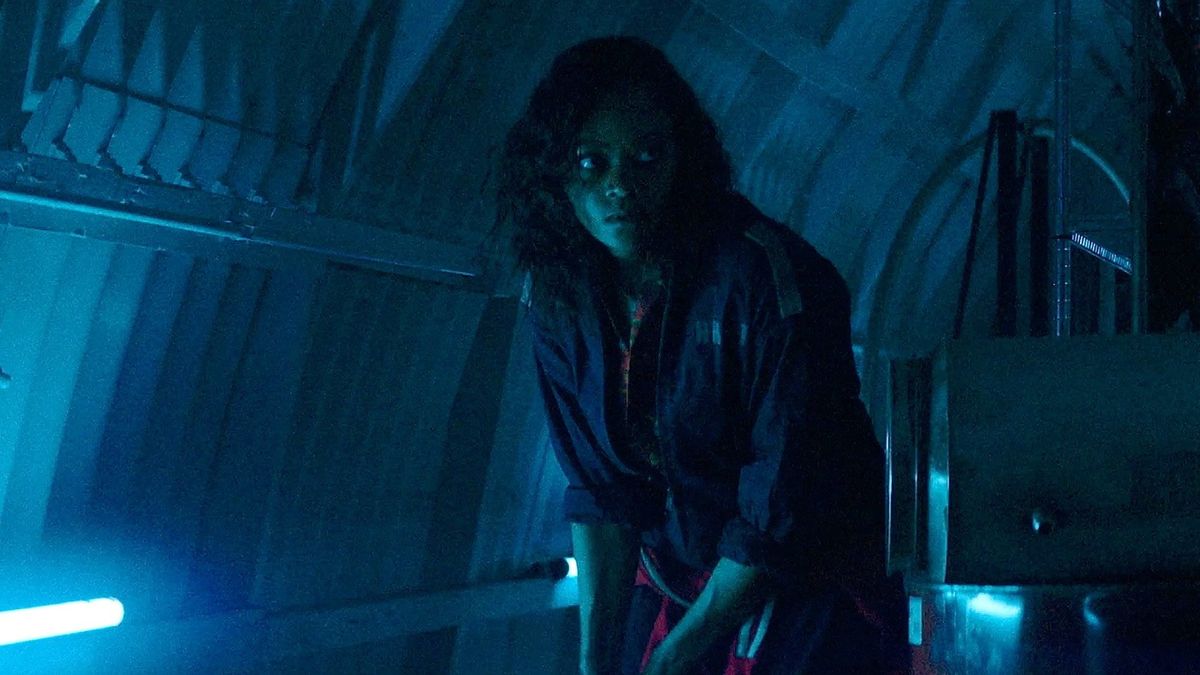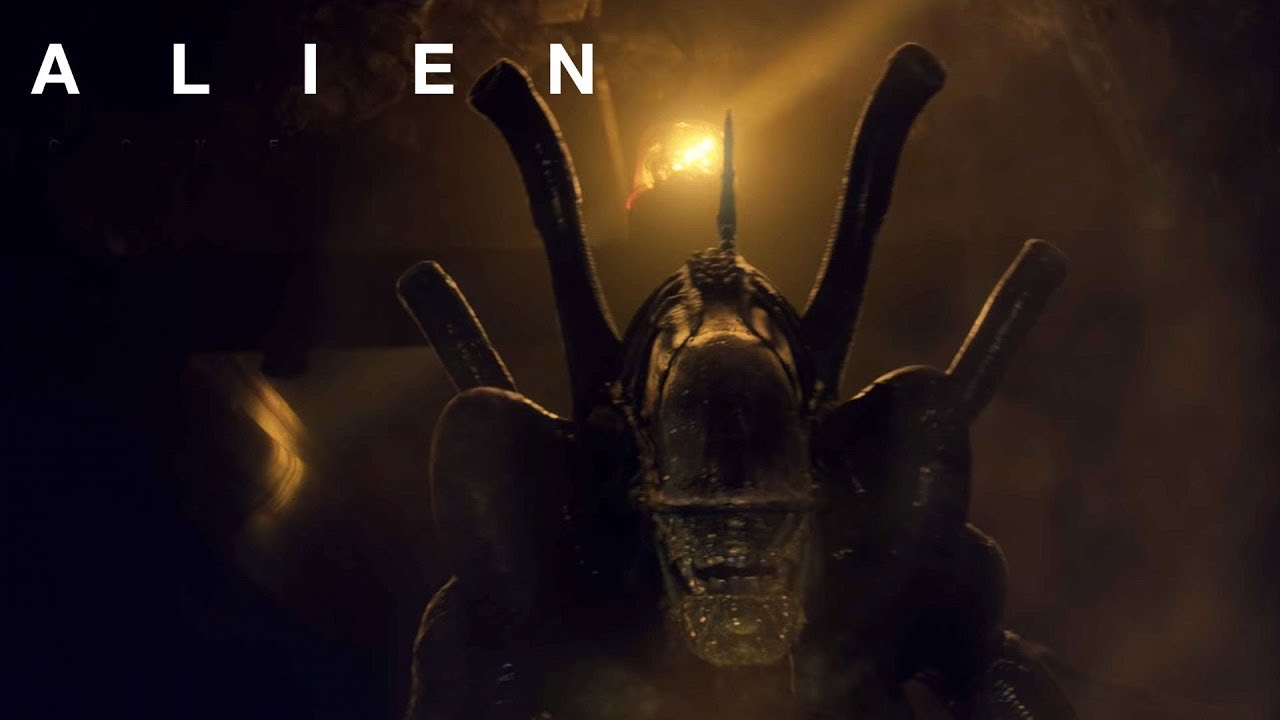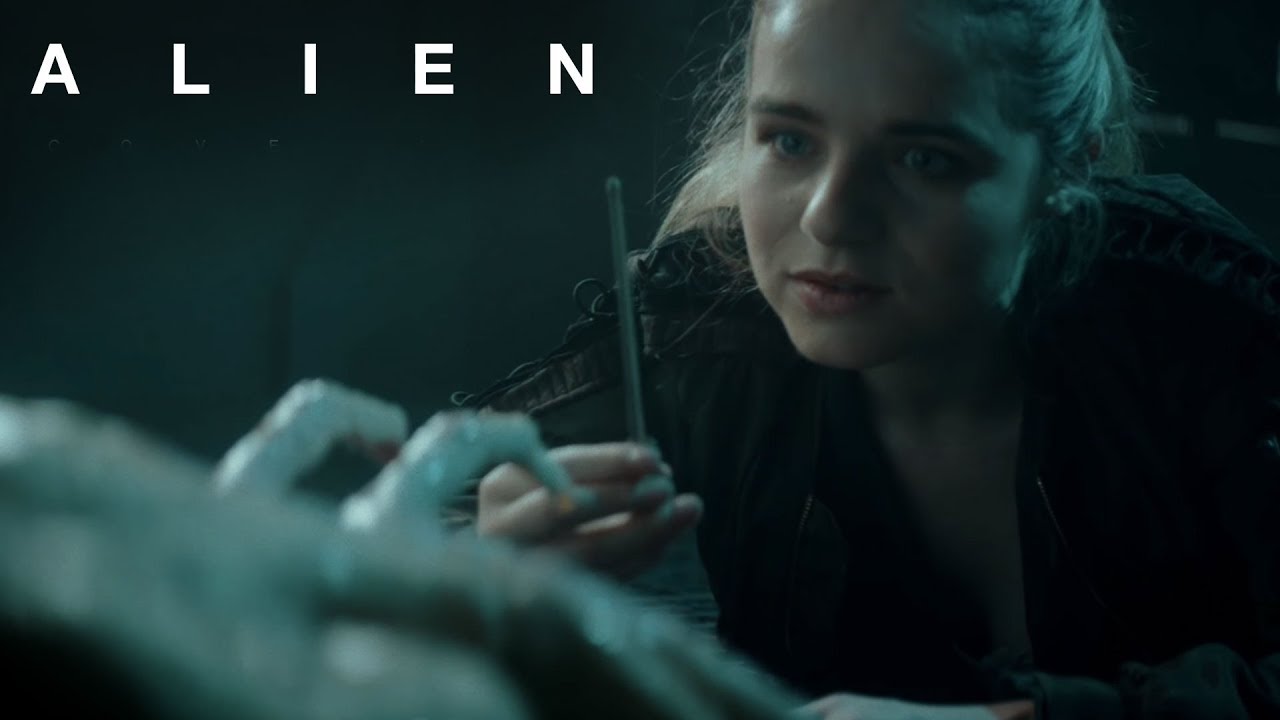It is undeniable that Ridley Scott’s 1979 film Alien is a classic of sci-fi horror, inspiring directors who wished to leave their imprint in the genres of horror and science fiction. Alien has a place in the hearts and minds of viewers, critics, and directors alike for the sheer tension the film created, for the epic cinematic monsters that Ridley Scott and H. R. Giger brought to life, and for the style and storyline of the film that forces viewers to remain on the edge of their seats at all times.
In 2019, FOX decided to commemorate the 40th anniversary of the original Alien film by seeking filmmakers to submit proposals for short films set after the events of Alien. To commemorate the epic picture, Fox worked with Tongal to broadcast six fan-made short films.
Eighteen filmmakers were picked from 550 applicants to create their proposals with screenplays, pitch videos, and other materials. Following the additional screening, Twentieth Century FOX selected six of them to have the opportunity to bring their ideas to life under the guidance of FOX.
It was not only a tremendous learning experience for those involved in the production of the films, but it also functioned as a powerful tool for reinvigorating the Alien franchise’s die-hard fan base, both current and prospective. Containment, Harvest, Night Shift, Specimen, Ore, and Alone are the six short films discussed in this video.
We assume that the majority of those watching the video are familiar with the Alien franchise’s basic lore and concept, but for those who have not seen any of the Alien films, we recommend pausing this one and watching our video titled, Entire Alien Movie Saga – Explored – Bio-Mechanical Horror Of H.R Giger That Changed Cinema! In the description, you will find a link to it. Then come back here for an unforgettable experience. Let us get this party started, shall we?
Alien: Containment

Colonial Transfer Vehicle Borrowdale was traveling with more than 23000 passengers to an unknown celestial object. However, things took a grim turn when the ship exploded mid-space after sixteen months of travel. But just before the explosion, an escape shuttle took off from Borrowdale carrying four survivors.
The survivors had barely managed to escape safely, but it seemed that all was not well for them even now. There was a feeling of dread and paranoia that filled the minds of the survivors, two of whom were still unconscious.
While Mills remained unresponsive and unconscious on a gurney, Nass woke up in a panicked and scared state when the shuttle’s pilot Ward tried to tend to his wounds. Ward managed to calm him down and asked about what happened on board Borrowdale.
However, he didn’t remember anything because he claimed that he was knocked out during the entire sequence of events. But Albrecht responds to Ward’s query. She reveals that Borrowdale had become infested with an outbreak and that there was a chance that someone among the four of them might be infected.
The situation had now transformed into something similar to the environment from John Carpenter’s The Thing, which had tones of paranoia and claustrophobia, as no one knew who was infected and who was not. Ward asks Albrecht to check if Mills, who was unconscious, was infected. But as she checked him, Nass accused Albrecht and her team of destroying Borrowdale, an accusation Albrecht didn’t recuse herself from because apparently, that was the only way to contain the contamination and stop the outbreak from further spread.
By now, Nass had started to lose his temper and cool and decided to kill Mills, assuming that he was infected. When Ward intervened to calm him down, he grabbed her by the neck and almost killed her before throwing her aside and proceeding towards Mills. But before he could kill Mills, he himself started to experience violent convulsions, coughing up blood.
It turned out that it was Nass who was infected or instead impregnated with a Xenomorph chest-burster embryo. Witnessing Nass’s harrowing state, Ward attempts to help him, but he soon succumbs, and Albrecht seals herself in a hatch. As the chest-burster bursts out of Nass’s body, Albrecht seemed to be fascinated by it, calling it incredible.
Contradictorily, Ward was clearly in a state of shock and trauma, witnessing the same. This is the price difference between most science people and other personnel in the Alien franchise. While the former gets fascinated by and wish to control the powers they don’t understand, the other people know better.
I mean, when Ward pointed a knife at the chest-burster, Albrecht went as far as asking her not to kill it. However, the escape shuttle soon had a sudden jolt that made Albrecht lose her balance, and she accidentally unsealed the hatch and fell at the door, blocking it from closing again.
They had been found by another ship, which planned to dock the escape shuttle. But the infant Xenomorph was on the loose, scurrying beneath the seats. It soon mauled and killed a fallen Albrecht. Ward managed to reach the hatch, only to find that she had nowhere to go.
In a desperate attempt to save the crew of the ship that had found them, she scrawls the words Do Not Open in her own blood. The post-credits scene shows Mills waking up from his unconsciousness, but upon witnessing Nass’s corpse lying beside him, he closes his eyes and puts back the oxygen mask in fear.
Chris Reading made a fairly beautiful short for a $30000 budget. The film succeeds as a short film and packs all the elements that could be expected from an Alien movie, but nothing more than that. While the CGI works fascinatingly well in the close shots, we can not say the same about anything wide-angle.
In fact, the first one minute of the short shows the setting of the environment where the rest of the film was going to take place, and it felt like something from an impressive animated film, but nothing like a live-action one.
Having said that, the interiors of the escape shuttle are commendable because it looks quite similar to the one that Ripley had used to escape in the original film. Speaking of Ripley, Ward serves as the Ripley for Reading’s short, and the overall acting is above average. For a 9 minute film, Alien: Containment has a decent story and builds enough suspense for the viewers to keep judging who was the one impregnated or infected.
However, we wouldn’t have complained if we got to see a bit more of the infant Xenomorph, but then we have to remember that budgetary constraints and screen time of Xenomorphs are inversely proportional.
Alien: Harvest

The USCSS November was a vessel sent on a mission to the comet X 3019 to harvest plasma. However, November started drifting on a collision course with the comet. Due to malfunctions, its navigation system had been compromised beyond repair, and naturally, its destruction was inevitable.
The four survivors of the vessel deduced that their only chance of survival resides in the escape pods set for automatic ejection in a few minutes. But things are not going to be easy because a Xenomorph is on the loose on the harvester. Because it was largely a harvesting mission, the crew members were not equipped with any arms or ammunition, and the only tools and weapons they had were a motion tracker and an ax.
Amidst this intense situation, a crewmember named Mari steers the rest towards the escape pods. But Sturgis soon seizes the motion tracker from Mari, claiming that she was not using it properly, and goes alone to find his own way, only to get attacked and killed by the Xenomorph.
The rest, i.e., Alec, his pregnant spouse Hanna, and Mari, need to get hold of the device, or else all is lost. So, Hannah goes to retrieve the tracking device and successfully returns with it. Mari then assures the other two that Weyland Yutani will find and rescue them once they get aboard the escape pod. The three survivors begin their journey towards the pods, but Alec realizes they had been moving in circles, reaching nowhere.
But then he gets attacked by the loose Xenomorph, which wanted to take Alec into one of the ventilation ducts. Fortunately for him, the women came to his help. As Mari tried to pull him back from the Xenomorph, Hannah attacked it with the ax, and in the process, some of the Xenomorph blood got spilled on Alec’s face, heavily burning his face.
Upon finally reaching the escape pods, Mari straps Hannah and Alec to their respective seats, but to Hannah’s horror, the escape pod’s system detected the presence of alien tissue in the pod and issued a containment warning announcement. But before Hannah could do anything about it, a facehugger attacks Alec and impregnates him.
On the other hand, an Ovomorph on the escape pod was hatching to release another facehugger. Surprisingly, Mari was watching the unfolding of these events with some sort of sadistic satisfaction and pleasure, but her moment of joy doesn’t last long as she gets attacked by the Xenomorph, which impaled her body with its tail, revealing that she was synthetic.
As Hannah looked at Mari getting slain, the pod’s hatch sealed, trapping Hannan inside with a face-hugged Alec and a facehugger that was about to come out of the Ovomorph to impregnate her. As the Escape Pod jettisoned just before The November crashed into the comet, it sent an automated transmission to Weyland Yutani to confirm the presence of Xenomorph specimen on board.
Directed by Benjamin Howdeshell and written by Craig Dewey, this short film could have done better on more grounds than one. First off, Howdeshell’s direction is pretty dodgy and loose, but what’s worse is Dewey’s shabby and inefficient writing. I mean, the crew was basically made up of technical experts, if not engineers, so how was it that they didn’t know how to read a damn motion tracking device?
Let’s assume for a moment that they were that naïve and technologically challenged. Even then, we fail to understand how a synthetic like Mari failed to do the needful. She either had to be really dumb, or it was the writing that was dumb. Furthermore, they turned Mari into some sort of a villain by the end; what is with this obsession with people trying to paint characters in David’s evil colors?
Yes, Michael Fassbender’s evil synthetic was a fascinating character, even if films like Prometheus and Covenant didn’t fulfill the expectations, but that hardly means that one should add so many plot twists in a short film. What’s sadder is that the short feels like a specific scene from a longer film, albeit devoid of any comprehensible context. The only saving grace of Alien Harvester was the above average and acceptable CGI. They showed less of the Xenomorph, but they relied on the concept of ‘less is more,’ which seems to have worked in their favor.
Alien: Night Shift

The film begins on a mining colony called High Lonesome on LV 422. Welles, a crewmember of a supply ship, finds his friend and colleague Harper in an alley. Harper looked exhausted and presumably hungover and had missed the day’s work, so Welles suggests they grab a drink because that might make Harper feel better.
Welles helped Harper get up, and the two of them left the dark alley to hunt for drinks, but as they walked away, the viewers get a short glimpse at the carcass of a facehugger, revealing that Harper may have been impregnated with a chest-burster embryo.
Meanwhile, the in-charges of High Lonesome’s storeroom, Rolly and Springer, prepare to shut the facility for the night, but Harper and Welles arrive at the scene and request to be let in.
Welles tells Springer that it was he and his men who brought the supplies to the colony and were given permission by their senior officers to get some liquor for their return journey. Springer hesitantly allowed the two men inside, but soon Harper started to feel unwell and requested to use the restroom.
As Springer escorted Harper to the restroom, Welles explored the storeroom. In fact, Rolly and Welles were in the middle of a small argument when Springer returned, but Harper followed him shortly in a worse physical condition. He was holding his stomach and constantly complained that something was moving inside of him.
He soon convulsed, collapsing to the ground in pain and froth coming out of his mouth. Springer opened Harper’s shirt only to find that a chest burster was moving inside of him. The infant Xenomorph soon broke open Harper’s ribs and came out of his chest. Witnessing this, Welles took out his gun to shoot the chest-burster but instead shot Springer on his neck.
Welles was clearly in a state of panic and missed several shots. Meanwhile, Rolly, who had gone to find a first-aid kit, returned after hearing the gunshots and found that Springer had been shot. Because of Welle’s crazed shooting, even the light of the storeroom had gone off. Welles thought it was best to leave the place and find safety; he suggested Rolly do the same, but she wished to avenge her fallen colleague.
After a bit of hiding and seek, she found the infant Xenomorph and battered it to death with a baseball bat. But her murderous rage comes to a pause when she hears the High Lonesome’s alert klaxon and then a cacophony of people screaming, gunshots, and bellowing cries of Xenomorphs.
Written and directed by Aidan Michael Brezonick, Alien Night Shift is one of the better shorts of the anthology as it packs a tighter story than the others. Furthermore, Amber Gaston as Rolly, T.K. Richardson as Welles, and Christopher Murray as Springer, have given efficient performances for their short screentime.
The film sort of worked on the lines of Alien: Containment, in which people were trapped in a room with a chest-burster. However, Alien Night Shift clearly has more story than Containment because it reveals to the viewer that the Xenomorph infestation of the colony had already begun, and people had already started to die because of the same.
Even the special effects were better because director Brezonick could use most of the available funds on the chest-burster instead of the background and setting because the short film was set in a storeroom instead of a spacecraft. Having said that, the short film could have had better sound effects.
For instance, the sound effect when Rolly batters the chest-burster is downright awful and out of place. It wouldn’t have hurt either if Welles’s character had a bit more depth and direction in himself.
Firstly, he starts off as a good guy who wishes to help his friend but goes on to being a complete jerk who steals beer cans. And, let’s not even get started with his shooting skills. He bloody well failed to shoot a target at point-blank and ended up shooting humans and electric circuits.
Alien: Specimen

On LV 492, a botanist named Julie was working a night shift in a greenhouse facility, and her only companion down there was Maggie, her dog. That night, she receives an unexpected shipment of soil, on which Maggie was unusually interested—sensing something out of place, Julie radios in her colleague Dev about the situation. Although Dev tried to allay her fears and asked her to get back to work, Julie decided to wrap the container to avoid any kind of spillage or contamination.
She then donned her headphones and resumed her work. Later that night, Julie gets shocked to see that the soil containers had fallen over and lay open. She removed her headphones, only to realize that the facility’s alarms were bellowing. But it was too late, and she couldn’t reach the door before it got sealed. Julie was now trapped inside with Maggie, who was whimpering at a distance.
While looking for Maggie and investigating the situation, Maggie slipped on some slimy liquid. When she followed the trail, she discovered that it ended in an egg-like object that was hidden in the soil shipment she had received. Fortunately for Julie, the radio comes back to life just long enough for Dev to inform her that he was about to reboot the facility’s power supply so that the lockdown could be overridden and the gates could be opened.
Right after this, Julie found herself in darkness and could only hear Maggie’s raged barking gradually turn into painful yelps. She managed to find herself a flashlight and armed herself with a shovel. She then followed Maggie’s cries, but upon locating Maggie, she also discovered a face-hugger that was hiding in the ceiling right above her.
The facehugger lept onto Julie, who managed to strike the creature away with the shovel. After this, the facehugger went for Maggie and latched itself onto her face. Maggie disappeared into the darkness, and only her cries while struggling with the creature could be heard.
Meanwhile, the power reboot had been completed, and Julie found an injured face-hugger crawling on the floor. Without wasting any time, she slew the creature with the shovel and later finds a heavily injured Maggie bereft of her skin, revealing that she was synthetic. Because Maggie was a synthetic, she couldn’t get impregnated, but she got injured by the acidic blood of the facehugger. As an act of mercy, Julie shoved her shovel into Maggie relieving her eternally.
Apart from Alien: Harvest, Alien: Specimen is the only story that its director didn’t write. When director Kelsey Taylor learned about the Tongal’s Project, she didn’t have enough time to come up with a good story, so she contacted others who wished to lend their story for her to direct. Finally, the one written by Federico Fracchia worked well for Taylor.
The facehugger was supposed to be created using special effects, but the tight budget and schedule came as a hindrance, and Taylor asked one of her friends Luc Delamare to provide CGI. Interestingly, the original script had Julie getting impregnated by the facehugger, but Taylor wanted Julie to live as she saw her and Dev as a part of a bigger story. So, they decided to sacrifice Maggie instead of Julie.
And we think it fits perfectly well with the story of the short film. The film should be commended for its efficient direction and script. Furthermore, the camerawork is by far one of the best among all the six shorts of this anthology.
Alien: Specimen allows Julie, Maggie, and Dev, to serve as protagonists of the story in their own rights, and in the end, it was the combined effort of all the three that led to the death of the facehugger.
Alien: Ore

In the year 2122, in the mining colony of Bowen’s Landing, a miner named Kolton finds his colleague Al’s corpse, who had gone missing. Later, Lorraine and others go down the main shaft through a lift, where Kolton informs them about Al. Lorraine dons a portable camera so that the synthetic supervisor Hanks can see the unfolding of events.
Upon reaching Al’s corpse, they notice that his chest was ripped open as if something had come out of it. Furthermore, they also noticed several eggs, amongst which one was split open. They soon concluded that it was something that came out of this egg that attacked Al. Lorraine decided to destroy the eggs, but Hanks forbade her from doing so and suggested that they should immediately evacuate the place and come back up to safety while she notified the company. While the miners began to collect Al’s corpse and evacuate, Hanks sent a transmission to Weyland Yutani, informing them about the incident.
However, before the miners could leave the space, a staff named Clark gets killed by something grotesque and hostile. Soon, the mine loses its light, and another miner named Winnie faces the same fate as Clark. By now, Hanks had locked herself in the control room and was watching everything through Lorraine’s camera.
It turns out that she was the one who had shut off the lights in the mine. The survivors managed to reach the lift despite the lack of light, and they began to ascend upwards. However, Lorraine stopped the lift as soon as it had started to move. She explained that if they went up, the creature would follow them, and that would put the entire colony in mortal danger.
Hearing this, Hanks tried to lure Lorraine to return to the surface and also promised Lorraine the finder’s bonus. This was the last piece of evidence that Lorraine needed to judge Hank’s true intentions and her true allegiance. Furious at this, Lorraine destroyed the camera that she was wearing and headed out to kill the creature herself.
She armed herself with a rock drill and a Xenomorph soon made its presence known to her. To Lorraine’s surprise, she soon found that other miners had joined her cause, and they were all standing with her to kill the Xenomorph. The short film ends with the Xenomorph lunging at them from the darkness.
The intense level of claustrophobia and dread that Kailey and Sam Spear’s Alien: Ore invokes is more effective than even a full-length feature like Alien Covenant. Kailey and Sam also wrote the script and were able to bring out a very efficient piece of work for a budget of as little as 35000 dollars.
Short films are usually known to serve as something of a part of a larger story, but surprisingly enough, Alien: Ore manages to serve as a complete story on its own and includes themes like family, deception, horror, and suspense. Most parts of the filming took place at the Britannia Mine Museum near Vancouver in Canada, which used to be a copper mine but has now been converted into a museum.
It all happened in the course of four troublesome days because the museum was still open when they started the shoot. So, they could shoot only at night. Furthermore, because the location was a mine, their radios didn’t function properly.
As a last resort, they had to keep production assistants as messengers to communicate messages from one person to another. Interestingly enough, the producer of Alien: Ore Victoria Burkheart was also attached with Alien 5 noted South African director Neil Blomkamp was supposed to direct
Alien: Alone

After the commercial transport vessel Otranto underwent a chemical leak, the crew of the ship abandoned it, leaving a synthetic named Hope behind. Hope has been drifting alone in the ship for more than a year and has grown tired of doing mundane and repetitive things like sketching, reading, and even counting the parts of the ship, such as rivets. All her efforts at the deteriorating ship prove to be meager and insufficient because the ship will eventually get damaged beyond repair, and it would be the end for Hope.
The only thing keeping Hope out of despair is a promise that her captain made to her before evacuating—that someone would come to her rescue. Hope has control of the entire ship, but there’s one room that she is forbidden from accessing—lab B11 A.
In a strange turn of events, the ship’s control room catches fire, damaging the systems and the main computer. Now that the computer was gone, nothing could stop Hope from accessing lab B 11 A. Upon entering the restricted room, she discovered several dead specimens, but one was in stasis.
She revived this specimen, only to realize that it was a face-hugger. As soon as it comes to life, the creature attempts to impregnate Hope but soon realizes that she is not a potential host. Right after, it disappeared into the dark corners of the ship. Hope was suffering from loneliness, and depression, if we are to say that synthetics undergo such troubles.
After she found the facehugger, it became her only companion or even a pet. On the other hand, the facehugger would reveal itself to her every once in a while, assuming that she could be a compatible host.
But both of them were dying, Hope because her parts were breaking down, and the facehugger because it was living beyond its natural life span. In a last-ditch effort to save both of them, Hope made some emergency repairs to the ship and maneuvered it towards a more populated location.
Her plan worked as intended, and Hope’s vessel was found by Macwhirr, who came aboard only to get knocked down by Hope, who then placed the face-hugger on his face. Later, he wakes up with no memory of what had happened and finds himself locked up in a room.
When he asks her to let him out, she refuses him freedom and simply asks him to accept his fate. Soon, a chest burster emerged from within him, breaking his ribs and killing him. The film ends with Hope staring at the fully-grown Xenomorph that was looming over her.
Even though one may find it difficult to call the relationship between Hope and the Facehugger a friendship, one can not deny that the film attempted to walk in a novel direction when it tried to show at least a peaceful coexistence between a face-hugger and a synthetic, or for that matter, between a Xenomorph and practically any other organism.
Despite having a similar budget of thirty-five thousand dollars, Alien: Alone relied entirely on special effects. Talk about prudent spending! They made two full-size puppets for the Facehugger and scale models for the vessel.
One of the facehugger models was a regular immobile puppet, while the other one was a radio-operated animatronic one, which was also fitted with air bladders to replicate breathing movements. Interestingly enough, both Alien Alone and Alien Harvest were filmed at Laurel Canyon Stages in Los Angeles.
The time limit that was set for the project was 9 minutes per short. However, Alien Alone goes over 12 minutes. Even then, director Noah Miller revealed that his short was originally more than 20 minutes long and expressed his wish to release the uncut version. Alien Alone suffers from the same issues as most other films of the anthology, i.e., bad writing.
While Taylor Lyons as Hope gives a fairly believable performance, she fails to ace what it means to be a synthetic; for instance, the one where her hand shivers because of her failing mechanical parts is obnoxiously bad. Having said that, one should view this one and all others of the anthology as short films only meant to celebrate the Alien franchise and the 40th anniversary of the original.
That way, one would learn to appreciate the beauty of these shorts, and as Plato once said, “Beauty lies in the eyes of the beholder.”
You can find all these shorts on the Youtube channel Alien Anthology; we’ll leave a link in the description.
